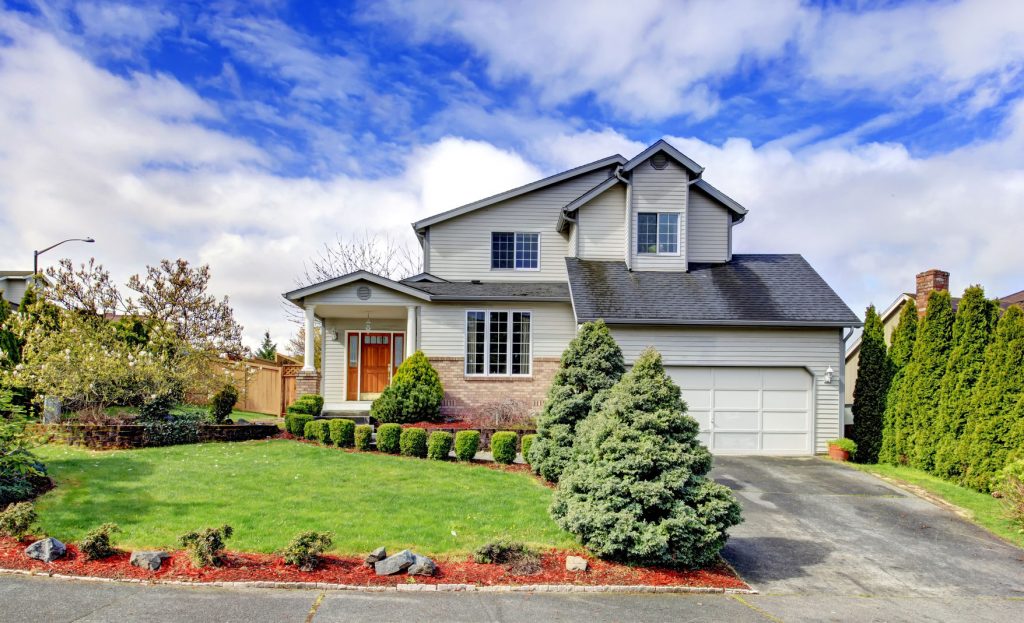 Refinancing rental properties has become synonymous with several compelling benefits. At the very least, it can unlock a multitude of wealth-building opportunities, including the ability to lower interest rates and monthly payments, improve loan terms, and earn additional cash flow. That said, far too few new investors are aware that this strategy even exists. For one reason or another, there’s an entire contingent of investors that don’t even realize the opportunity they are missing out on.
Refinancing rental properties has become synonymous with several compelling benefits. At the very least, it can unlock a multitude of wealth-building opportunities, including the ability to lower interest rates and monthly payments, improve loan terms, and earn additional cash flow. That said, far too few new investors are aware that this strategy even exists. For one reason or another, there’s an entire contingent of investors that don’t even realize the opportunity they are missing out on.
Despite the many reasons one may have to refinance rental property assets, the process should not be taken lightly. To be clear, rental property refinancing does coincide with an inherent degree of risk. Therefore, it’s critical for investors to not only comprehend their purpose for refinancing but to also weigh the risks versus the rewards. Done correctly, and for the right reasons, refinancing a rental property can be a great move. Learn more about why investors may want to refinance a rental property in their own portfolio, here.
When Should I Refinance My Rental Property?
The best time to refinance your rental property is when the value of the property is high and interest rates are low. The most common reasons to refinance are to:
- Lower your mortgage rate
- Pay off your loan faster
- Purchase new investment properties
- Upgrade a current investment property
- Pay off a ballooning note or a variable rate mortgage
That being said, now is a great time to consider refinancing a rental property. A lot has changed in a relatively short period of time. In particular, those who bought before the recession hit will most likely find today’s rates much lower than at the time of their initial purchase. In fact, the finance industry is leaning heavily in favor of borrowers and refinancers at the moment. While interest rates are in fact on the rise, they are still historically low. Today’s rates look a lot better than they did a few decades ago. Meanwhile, rates will continue to rise as the economy strengthens. It is safe to say that the sooner you choose to refinance, the better.
Benefits Of Refinancing Rental Property Assets
There are countless reasons to refinance investment property, but the best reason is always going to be the one that furthers your real estate investment strategy. That said, any of the following benefits represent a good reason for refinancing rental property:
- Refinancing rental property assets may allow some investors to switch from a variable interest rate to a fixed rate.
- Refinancing a rental property at the right time could easily lower the amount investors owe in interest over the life of the loan.
- In lowering the amount investors owe over the life of a loan, they will also be able to lower monthly obligations.
- Refinancing a rental may help investors change the length of the loan they are committed to.
- A cash-out refinance may allow investors to purchase additional properties or update properties in their portfolio.
Convert a Variable Rate To a Fixed
One of the major reasons to refinance your rental property is to convert from a variable interest rate (also referred to as an adjustable rate) to a fixed one. Common loan terms for rental properties are 5-1 to 10-1ARM, Interest only, or 30 year fixed rate. For example, a 5-1 ARM typically has a 30 year amortization period and term with a fixed interest rate for the first 5 years and an adjustable rate for the remainder of the term, adjusting once per year. Why is this important? While an adjustable rate can result in lower mortgage payments in the short-term, it can be a nightmare if interest rates were to rise in the long-term. Locking into a low, fixed rate, however, can protect investors from looming interest rates down the line. A fixed rate means mortgage payments will remain the same over the term of the loan, no matter how high or low the market goes. After the fixed rate period of the loan term, investors typically refinance using the current market value or sell the property.
Lower Interest Rate
Another consideration for refinancing your rental property is the ability to lower your interest rate. For those that purchased their investment property at a higher rate, refinancing could potentially save you thousands of dollars over the life of the loan.
Lower Monthly Payment
By lowering your interest rate, investors will also be lowering their monthly mortgage payments. For a rental property, this could equate to additional cash flow which could be saved or leveraged into other investments. If an investor is trying to hold the property for the long term, buying down the rate may be an option that will create savings over the life of the loan.
Adjust Loan Term
Many investors choose to refinance their rental property to adjust the term of their loan. For investors with a 15-year interest rate, the opportunity to switch to a 30-year rate can provide subtle, but significant benefits to their business. Or an investor may be facing a balloon payment. A payment of the remaining balance on the mortgage. By refinancing into a fully amortizing term, the investor can avoid additional balloon payments. It is worth noting, however, that the duration of the loan will impact monthly payments.
Take Cash Out
Another motive for refinancing your rental property is to take cash (equity) out of the property. With a cash-out refinance, investors have the opportunity to withdraw above and beyond what they owe on their current mortgage, helping to put cash in their pocket, which could be used for upgrades on their current rental property or leveraged for other investment properties.
How To Refinance An Investment Property In 4 Steps
Those who know how to refinance a rental property are probably already aware of how beneficial it can be in the right circumstances. However, there are still plenty of people (even investors) that didn’t realize refinancing a rental property was an option; they had no idea they could reduce their monthly payments by minding a few simple steps.
If you qualify to refinance a rental property, here are some of the most important steps to keep in mind:
- Determine How Much Equity You Have and the Current Market Value of the Property
- Exercise Profitability
- Acquaint Yourself With Mortgage Rules
- Refinance
Prior to learning how to refinance a rental property, you must first take a look at the equity you have already managed to build up in a respective property. This is determined by subtracting the remaining mortgage from the current market value of the property. Lenders require at least 25 percent or more in equity to refinance a loan secured by a non-owner-occupied property. In other words, lenders will want to see that you are less likely to default. Those with more equity have more skin in the game, and are therefore less likely to default on mortgage payments.
It is worth pointing out that lenders don’t necessarily view the current rental rate as dependable. The annual rental income has to be higher than the rental expenses and can cover the new mortgage payments. Rent rolls, property management questionnaires, and tenant lease agreements are used to prove to the lender that the rent you collect will be dependable.
If you can prove that rent is dependable and you do have plenty of equity, it’s then important to familiarize yourself with the rules of refinancing. Mind due diligence and research what you can and can’t do, as lenders will all have their own guidelines to follow.



